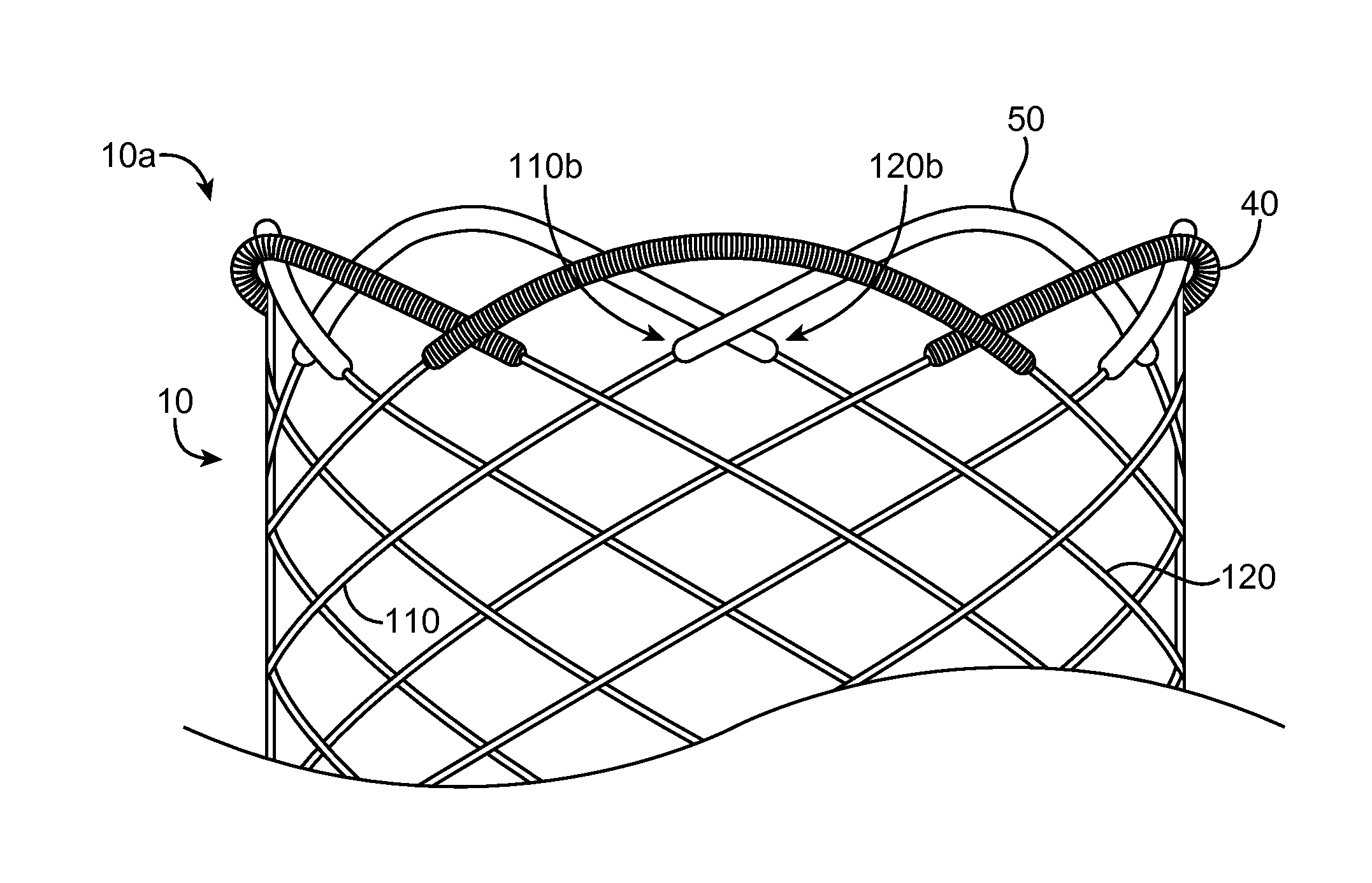Braided scaffolds
a scaffold and brad technology, applied in the field of brad or woven stents or scaffolds, can solve the problems of limited fracture toughness, many challenges to overcome, and significant effect on the overall ability of the stent, and achieve the effect of reducing radial strength or stiffness
- Summary
- Abstract
- Description
- Claims
- Application Information
AI Technical Summary
Benefits of technology
Problems solved by technology
Method used
Image
Examples
example 1
[0165]To achieve an appropriate fit for this type of vasculature, one may have the free-standing radii for scaffolds 201, 202 and 203 the same (i.e., R1=R2=R3) and equal to or greater than V3, V2, and V1, and the coverage lengths (Z) for the three scaffolds the same (i.e., L1=L2=L3, respectively, FIG. 21). With these dimensions selected, one can then, utilizing the above relationships, choose a suitable scaffold segment type for each vessel portion to avoid a chronic outward force condition for the narrowed parts of the vasculature.
[0166]One can adjust the fiber length (S) or the free-standing length (Zi) (or both) to achieve the same radial force acting on the vessel for the scaffolds 201, 202 and 203 compressed to different diameters. Thus, for Zi constant and V1>V2>V3 the fiber lengths are S1>S2>S3. Or, alternatively, for S constant and V1>V2>V3 the free-standing lengths are Z1<Z2<Z3.
example 2
[0167]for equal coverage lengths (Z1=Z2=Z3), increasing braid length (S1>S2>S3), and decreasing free-standing radius (R1>R2>R3) EQS. 2, 3A-3B yield the following:[0168]Scaffold 201 values: S / Zi=4, Ri=6.5 mm, Zi=50 mm for L1,[0169]Scaffold 202 values: S / Zi=3.5, Ri=6.0 mm, Zi=50 mm for L2,[0170]Scaffold 203 values: S / Zi=3, Ri=5. mm, Zi=50 mm for L3.
example 3
[0171]For unequal coverage lengths (Z) for the three scaffolds (i.e., L1L2L3, respectively, FIG. 21) vary (S / Zi) to achieve the same radial force acting on the vessel for each scaffold having a different coverage length and deployed in vessel having variable radius.
PUM
| Property | Measurement | Unit |
|---|---|---|
| Fraction | aaaaa | aaaaa |
| Time | aaaaa | aaaaa |
| Fraction | aaaaa | aaaaa |
Abstract
Description
Claims
Application Information
 Login to View More
Login to View More - R&D
- Intellectual Property
- Life Sciences
- Materials
- Tech Scout
- Unparalleled Data Quality
- Higher Quality Content
- 60% Fewer Hallucinations
Browse by: Latest US Patents, China's latest patents, Technical Efficacy Thesaurus, Application Domain, Technology Topic, Popular Technical Reports.
© 2025 PatSnap. All rights reserved.Legal|Privacy policy|Modern Slavery Act Transparency Statement|Sitemap|About US| Contact US: help@patsnap.com



